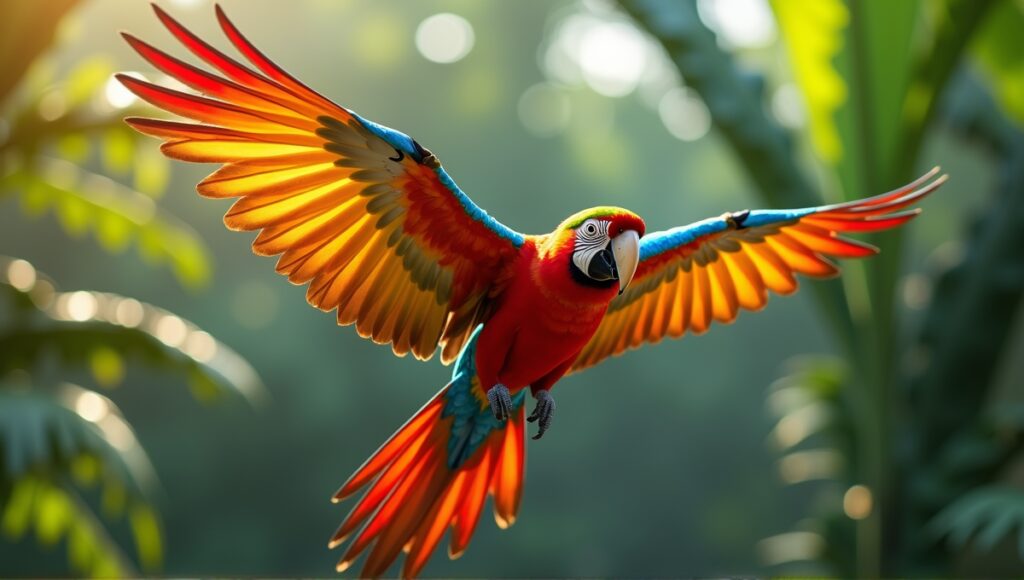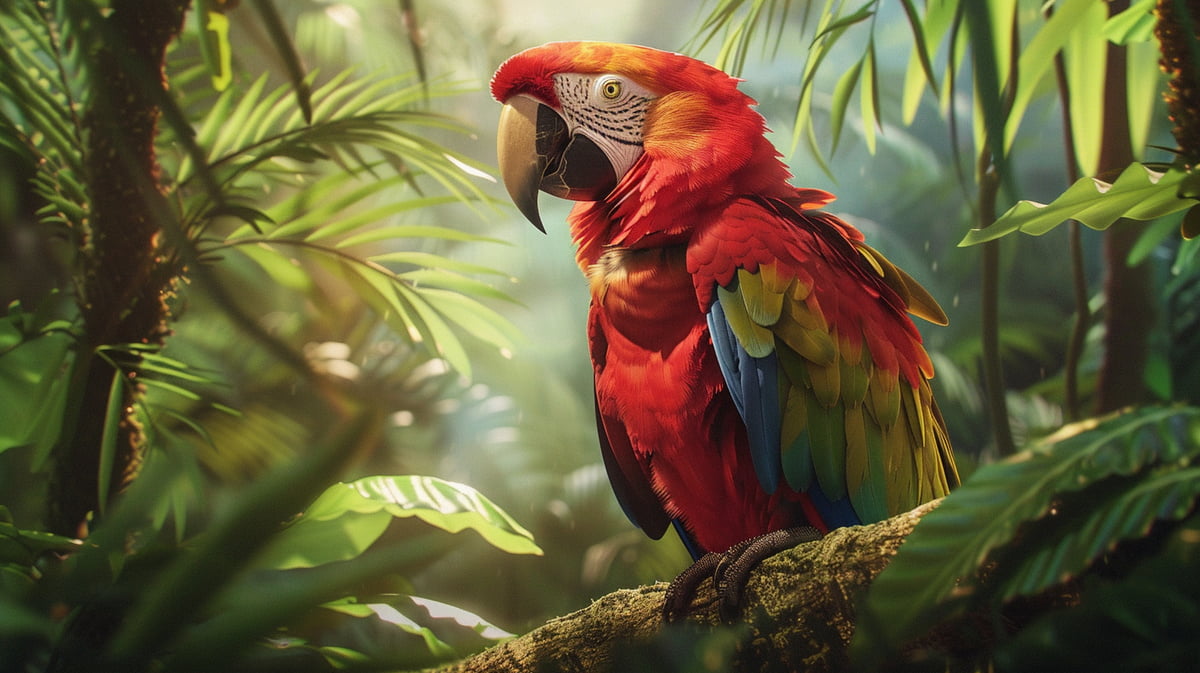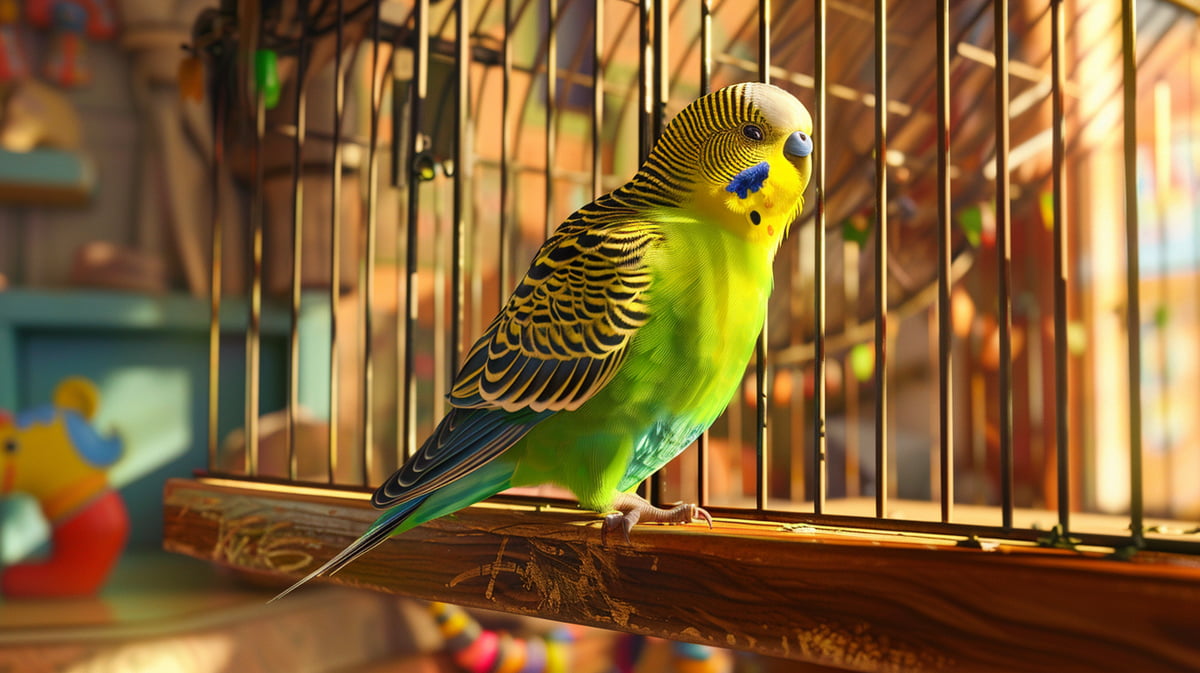I’ve been studying parrot anatomy for years. Parrots are truly remarkable flyers with some very interesting anatomical adaptations. Their light, hollow bones and highly efficient respiratory system make flight possible.
There powerful beaks easily crack the toughest nuts, and their zygodactyl feet help them grip securely. Their brain-to-body size ratio is also impressive and comparable to higher order primates. So let’s take a deep dive into parrot anatomy.
Parrot Skeletal Structure
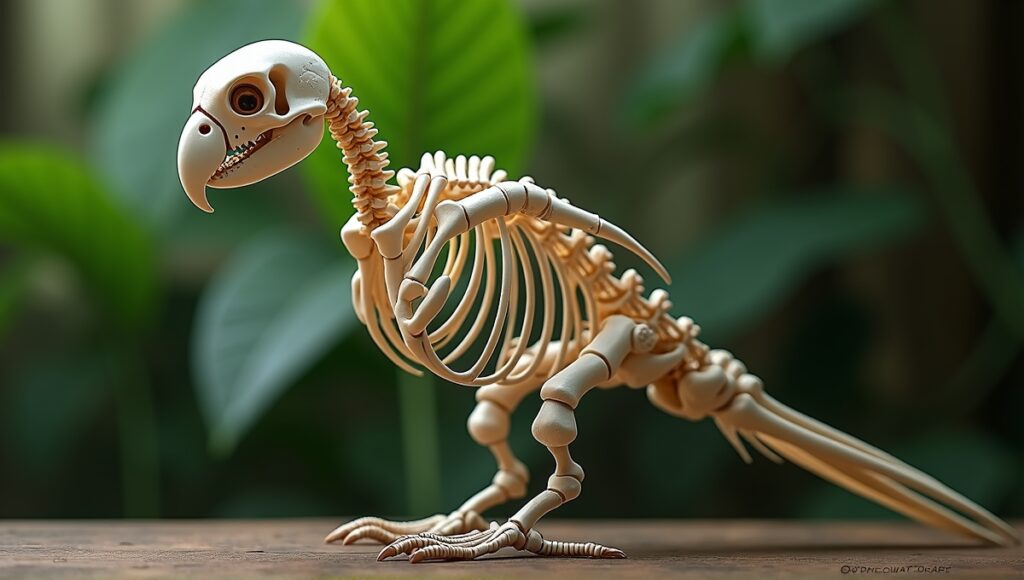
Parrots have an interesting skeletal structure that allows them to fly and thrive in various habitats. Their bones are strong yet lightweight, making them very efficient flyers. I’ve researched parrot anatomy for years, and I’m still amazed at the various adaptations parrots have.
Parrots have fused vertebrae, which makes their skeleton more stable while flying. The fusion of the vertebrae allows them to maintain proper posture while flying. You’ll also notice some unique adaptations to their skull if you observe a parrot up close. For example, they have a kinetic skull, meaning their beak can move. Combined with strong jaw muscles, parrots are excellent at cracking tough nuts and seeds.
Parrot toys are essential for keeping their beaks healthy and providing mental stimulation.
Parrot feet are another fascinating adaptation. Parrots have a zygodactyl foot arrangement, meaning they have two toes facing forward and two toes facing backward. As you watch a parrot, you’ll notice how well they can use their feet to climb and manipulate objects.
Another key adaptation is the keeled sternum, which provides attachment points for flight muscles. Without a keeled sternum, parrots wouldn’t be able to produce enough power for takeoff and sustained flight.
Below are the primary bones in a parrot’s skeleton:
- Skull
- Vertebrae (fused)
- Sternum (keeled)
- Coracoid
- Furcula (wishbone)
- Humerus
- Radius and ulna
- Carpometacarpus
- Femur
- Tibiotarsus
- Tarsometatarsus
These bones all work together to create a very strong yet lightweight skeleton. It’s truly a remarkable feat of natural engineering.
Parrot Anatomy Respiratory System
The parrot respiratory system is an impressive example of efficiency, and air sacs are key to this efficiency. They’re located throughout the body and function like bellows to move air through the lungs, making the parrot respiratory system unique in that it achieves unidirectional airflow through the lungs.
Parrots get more oxygen from each breath than mammals, thanks to their efficient oxygen exchange system. This is also why they can fly at high altitudes. I’ve noticed that parrots breathe at different rates depending on the situation.
When a parrot is at rest, it breathes at a relatively low rate. However, when a parrot is flying, its breathing rate increases significantly. Various factors, such as temperature stress and excitement, can also increase breathing rate. Therefore, you should know the breathing rate of your pet parrot.
Birds, including parrots, have air sacs that take up to 1/5 of their entire body volume. This large volume of air is what makes these birds so buoyant and helps regulate their body temperature. Parrot hearts are another impressive feature. They beat 200 times per minute at rest and up to 800 times per minute when flying.
Below is a comparison of the parrot respiratory system versus the mammal respiratory system:
| Characteristic | Parrot | Mammal |
|---|---|---|
| Airflow | Unidirectional | Bidirectional |
| Air sacs | Present | Absent |
| Oxygen extraction | More efficient | Less efficient |
| Lung structure | Rigid | Expandable |
| CO2 removal | More efficient | Less efficient |
This efficiency allows parrots to thrive in a range of environments, making them such successful and adaptable animals.
Parrot Digestive System
Parrots have a digestive system designed to handle a diverse diet, and their beak plays a key role in this system. It’s designed to crack open seeds, hull fruits, and even crush bone. A parrot’s beak may be shaped differently and have a different strength depending on the natural diet of that species.
The crop is an essential part of a parrot’s digestive system. It’s a pouch in the throat that stores food and allows it to soften. This is why you’ll see parrots eat very quickly and then digest the food later. This is a helpful adaptation in the wild when feeding makes a parrot vulnerable to predators.
From the crop, food moves to the proventriculus (an organ in the digestive system of birds and other animals) and the gizzard. The proventriculus is responsible for releasing digestive enzymes, and the gizzard grinds the food with muscular action. Each of these organs plays a role in efficiently processing different types of food.
Parrots have a shorter intestinal tract relative to their body size. This is a common characteristic in birds, and it allows for rapid food digestion and elimination. At the end of the digestive system is the cloaca, which is responsible for waste elimination and reproductive functions.
Here’s how a parrot’s digestive system processes some common foods in their diet:
- Seeds: Cracked by the beak, stored in the crop, ground in the gizzard
- Fruits: Sliced by the beak, softened in the crop, nutrients absorbed in the intestines
- Vegetables: Chopped by the beak, broken down by enzymes in the proventriculus
- Nuts: Cracked by the strong beak, ground in the gizzard
- Pellets: Softened in the crop, broken down by enzymes and grinding action
Understanding a parrot’s digestive system can help you select the best diet for your parrot’s health and longevity. Consider providing pet bird toys for play and interaction during feeding times.
Parrot Nervous System and Brain
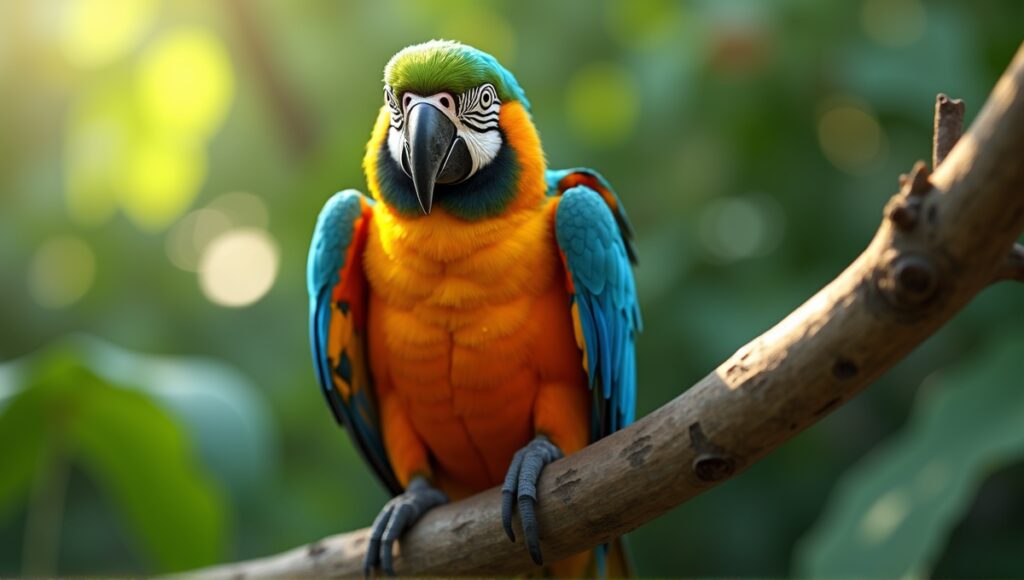
Parrots have impressive cognitive abilities due to their sophisticated nervous system and brain. They have a brain-to-body size ratio similar to that of higher primates, which explains their intelligence and ability to solve problems. I’ve even seen parrots exhibit complex behaviors that some larger animals are unable to do.
The parrot brain contains several main regions, each with its own purpose. The telencephalon is responsible for higher-level thinking and decision making. The cerebellum controls movement and balance, which is essential for flying. The optic lobes process visual information, helping parrots to effectively navigate their surroundings.
Parrots have specialized neural pathways for vocalization and mimicry. Through these adaptations, they produce an incredible variety of sounds and can even mimic human speech. It’s truly astounding to hear a parrot talk or mimic other complex sounds.
Their sensory adaptations are just as remarkable. Parrots have excellent visual acuity and color vision. They can also see ultraviolet light, which humans cannot see. Additionally, their sense of hearing is excellent. For example, birds are better at discerning rapid changes in pitch and intensity compared to humans.
Here’s how parrots compare to other animals in terms of cognitive abilities:
- Problem solving: Equal to that of great apes
- Tool use: Similar to that of crows
- Self-awareness: Demonstrated in mirror tests (like dolphins)
- Social cognition: Similar to dogs
- Numerical competence: On par with that of chimpanzees
- Language comprehension: Surpasses many primate species
These cognitive abilities make parrots truly fascinating pets. They process information much faster than other species, which is why they learn and adapt so quickly.
Parrot Muscular System
Parrots’ muscular system is finely tuned for flight and overall survival. The flight muscles are the most notable. The pectoralis major is the largest muscle and powers the downstroke during flight. The supracoracoideus lifts the wing for the upstroke. Together, these muscles allow the bird to fly.
In flighted birds, breast muscles account for 15-25% of the bird’s total body weight. This is a significant percentage and reflects the importance of flight in their survival. I’ve studied bird anatomy for years, and I’m always amazed by the efficiency of these muscles.
Leg and foot muscles are also important, as they allow parrots to securely perch and climb. The strong grip you feel when a parrot lands on your finger is due to these specialized muscles. Parrots also have specialized muscles in their beak and tongue, which allow them to manipulate food and communicate effectively.
Muscles are adapted for sustained flight, which includes efficiency and muscle fatigue resistance. These muscular adaptations are why parrots can fly for extended periods.
Here’s a table of the different muscle groups and their main function in parrots:
| Muscle Group | Function |
|---|---|
| Pectoralis Major | Powers downstroke during flight |
| Supracoracoideus | Lifts wing during upstroke |
| Leg muscles | Important for perching and climbing |
| Foot muscles | Allows the bird to grip securely |
| Beak muscles | Allow the bird to manipulate food/water |
| Syrinx muscles | Muscles used to produce vocalizations (singing/talking) |
By understanding your parrot’s muscular system, you can provide the right exercises and enrichment.
Parrot Feathers and Plumage
Parrots boast a stunning and intricate feather structure. On average, they have anywhere from 2,000 to 3,000 feathers covering their body. Each type of feather serves a distinct function in flight, insulation, and communication.
Contour feathers make up the outer layer of a parrot’s plumage and provide streamlining for flight while also displaying vibrant colors. Underneath the contour feathers, down feathers offer insulation, and filoplumes, a hair-like feather, help the parrot sense the position of its other feathers.
The design of each feather is a testament to the complexity of natural engineering – a central shaft supports interlocking barbs and barbules. This design forms a light, yet sturdy, surface, making it the perfect solution for flight. Parrots go through a molting process as they shed and replace their feathers to keep their plumage in top condition.
Feather coloration in parrots is a captivating topic, as some colors derive from pigments, while others result from the feather’s structure itself. These colors play an important role in communication and camouflage, as bright plumage can attract mates or serve as a warning to predators.
To help pet parrots care for their feathers, be sure to:
- Allow them to bathe regularly.
- Provide a balanced diet to ensure healthy feather growth.
- Give them access to UV light to synthesize vitamin D.
- Avoid over-handling, causing wear on feathers.
- Monitor proper humidity levels.
- Schedule regular vet check-ups to ensure the health of their feathers.
Properly maintaining feathers is key to the overall health and happiness of your parrot, as a healthy plumage is a good indication of a healthy and happy bird.
Parrot Reproductive System
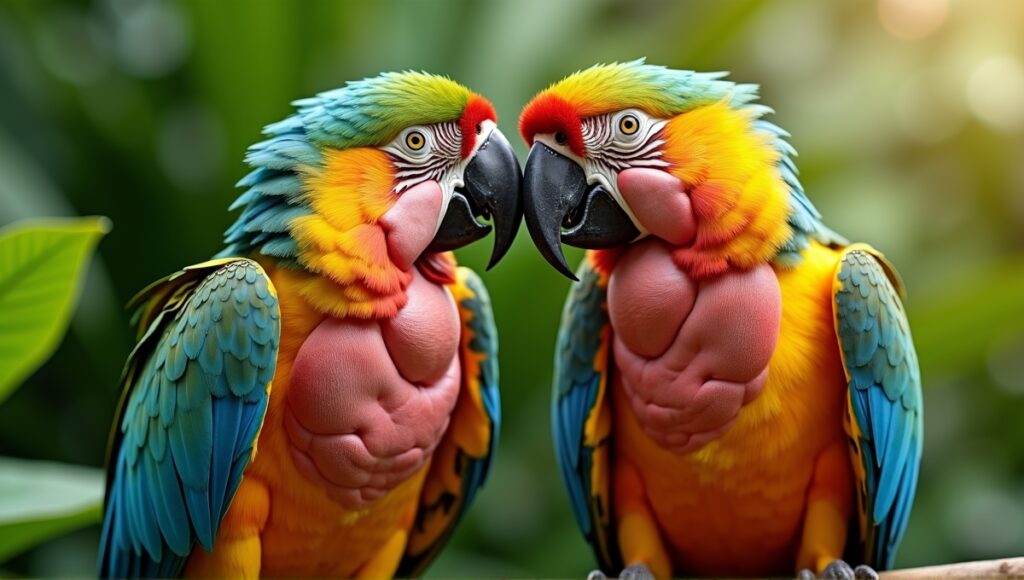
Parrot reproductive anatomy is intriguing and intricate. Some species exhibit sexual dimorphism, while others do not. Additionally, for many species of parrots, determining the sex of the bird is a challenge without genetic testing.
The male parrot has internal testes, which are situated just below the kidneys. The testes produce sperm and male hormones. The cloaca, which is a multi-purpose organ, is the opening to the exterior of the bird for both excretion and reproduction. During copulation, the males evert the cloaca to deposit the sperm.
The female parrot typically has only one functional ovary, which is typically the left ovary. Within the ovary, the egg formation takes place. This process is quite complex and involves several steps. As the egg passes through the oviduct, it receives the yolk, the shell, and ultimately the outer layer.
Breeding behavior in parrots is often very elaborate. Most species have courtship rituals involving vocalizations, displays, and mutual preening. These actions are part of the process of strengthening the pair bond and synchronizing readiness to breed.
Factors that come into play for successful breeding in parrots include:
- The age and general health of the breeding pair
- Having the proper nutrition
- Adequate nesting locations
- Environmental conditions (light and temperature)
- Stress levels
- Compatibility of the pair
- Genetic diversity
Understanding the parrot reproductive system is essential to successful captive breeding and conservation efforts. The reproductive anatomy and behavior of parrots is complex but interesting. Additionally, if you are considering adopting a pet bird for beginners, make sure you research thoroughly to find the best fit for your home.
A Few Last Words
Parrots and there Anatomy are truly remarkable that have evolved to survive as masterful avian species. Their skeletal design is one of a kind, their respiratory system is highly efficient, and their digestive system is incredibly complex. All of these systems work together in perfect harmony. And with a highly intelligent brain, parrots are capable of impressive cognitive tasks, allowing them to thrive in a variety of environments. From their strong flight muscles to their colorful feathers, every aspect of a parrot’s biology is finely tuned.
I’ve dedicated countless hours to studying Parrot Anatomy, and I’m still constantly in awe of their physiology. You now have a strong baseline to better understand your feathered friend, which will ultimately help you provide superior care for him or her.


